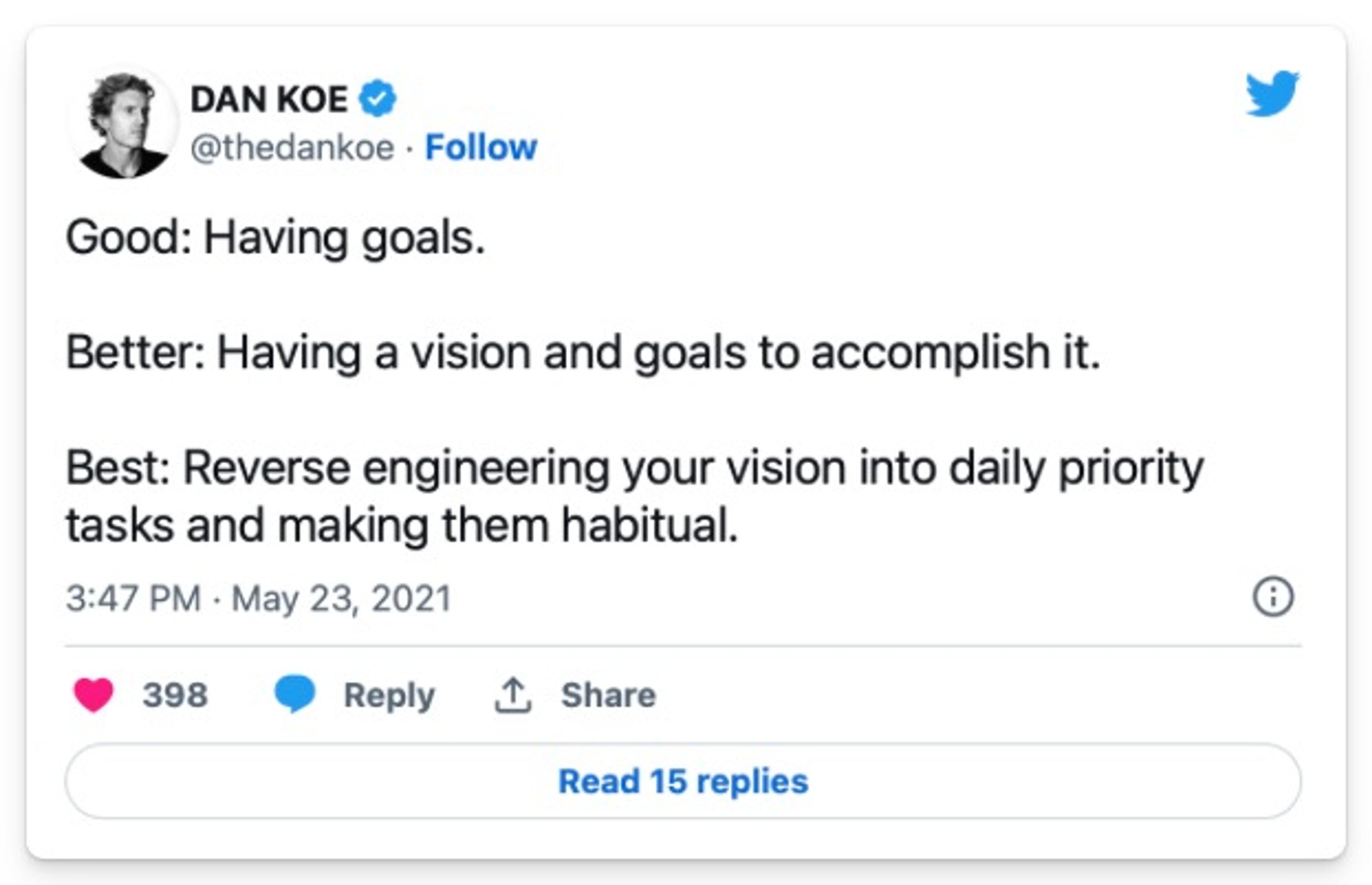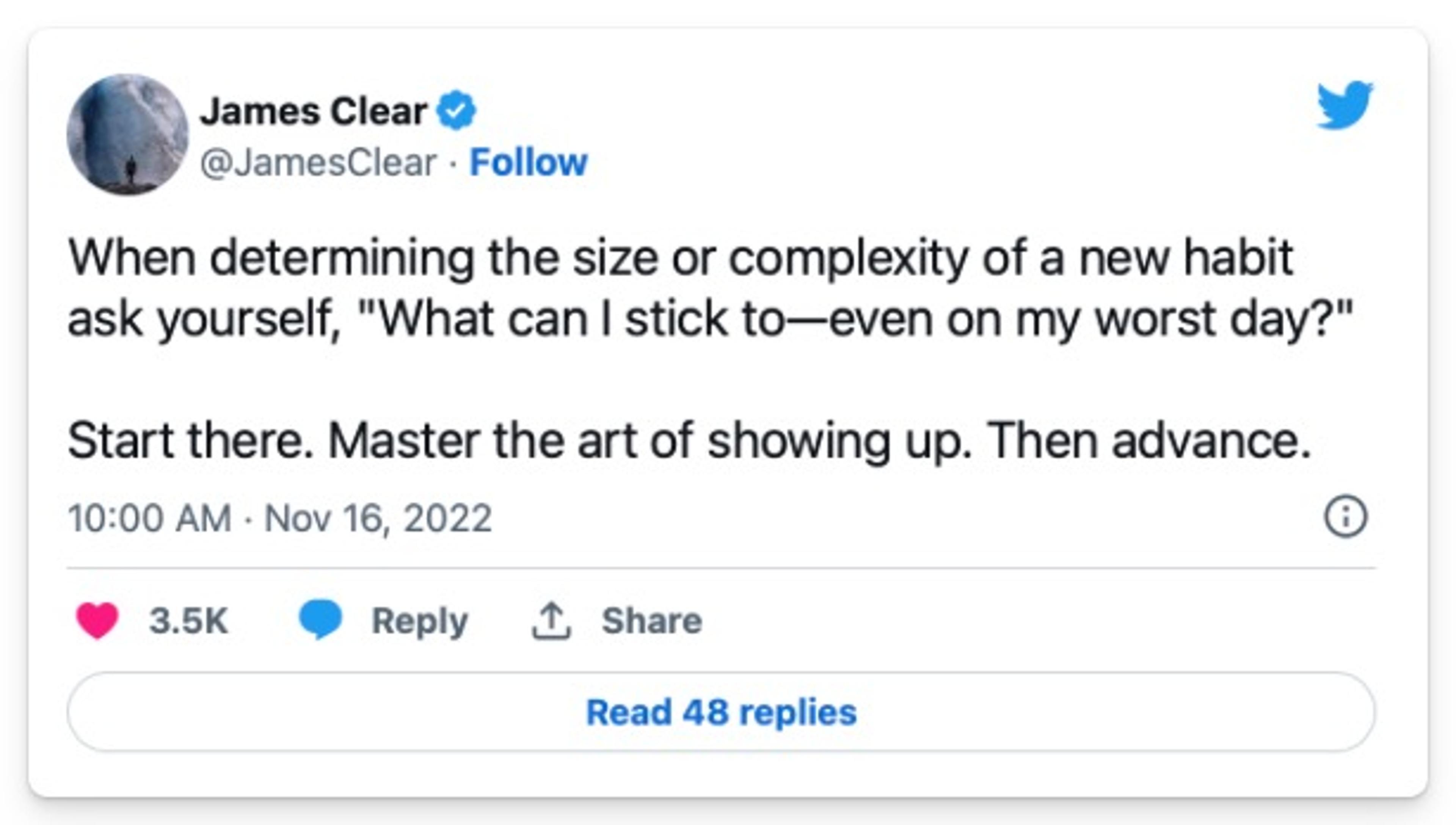/One pitfall new sellers fall into that slows growth

One pitfall new sellers fall into that slows growth
Failing to set measurable goals and create regular habits could leave you in a rut.
At Aura, we hear from new sellers who’ve gotten caught up in the seller hustle and haven’t slowed down to think about the bigger picture. It’s easy to do when you’re bombarded with content on all the tips and tricks you’ll need to make money fast.
The most successful sellers we interact with have a compelling vision, specific goals and habits to set them up for success.
Sustained growth isn't an accident. To scale, you need to be intentional about where you want to be and how you're going to get there.
What if my goal is making as much money as I can, as quickly as I can?
When sellers don’t pause to think about their goals beyond making lots of money fast, growth can stagnate or come only in random bursts. How will you know when you’ve made it and are ready for the next phase of growth or expansion? How will you know if your investment of time has paid off?
In contrast, sellers who slow down to reflect and plan are more likely to achieve their goals, avoid burnout, and gain momentum.
Read on for three steps to get started creating your master plan.
#1. Know your “why”
First, identify the catalyst in your selling journey.
What played a role in your jump to become a seller and business founder?
Perhaps it was a weekday evening when you missed dinner with your kids after your boss kept you late, or the day your tuition bill came in the mail. Maybe you had an epiphany when the car of your dreams drove by, or while staring at a stack of overdue bills.
Based on the catalyst you’ve identified, think about how your life will be different when you’ve “made it.” How will it feel? Imagine your life on the other side of success.
Will you be sitting down at dinner with your kids, secure in knowing that you own your schedule and outcomes? Will you be booking that vacation you've dreamed about, knowing you can manage your business from anywhere?
Your why is the power behind your goals that will set the tone for how aggressively you pursue growth and how you maintain momentum even when faced with challenges. Return to your why again and again.
Nate Jackson, founder of Hustle Buddies with his wife Alsyha, recalls the importance of understand his “why” after getting caught up in the hamster wheel of success:
"When I realized that my "why" for this business was just simply: I want to retire early and spend my days doing fun stuff with my family I had to realign my priorities after focusing on my "why" in order to do things that allowed me to hang out with my family. For me, that meant that I didn't need to start a prep center/warehouse/scale to some huge number. It meant keeping operating expenses low, keeping my net income high, and focusing on things that let me be around family more."
Nathan Jackson
What if I’ve already achieved my first “why” of founding an Amazon selling business? Aura’s co-founder, Dillon Carter, has a word for sellers to avoid this eventual limbo state.
"I've noticed a pattern where once a seller achieves their initial goal of "running a successful Amazon business," they often end up in a sort of limbo state.
Most sellers achieve their initial goal quicker than they thought, but they never thought about what would come next. Unfortunately, it's all on your shoulders now—no one can give you that answer.Staying in this limbo state will make you question everything—why it doesn't feel as good as you thought it would, why you feel bored and uninterested, etc. Staying in limbo means this will get worse with time.
To avoid the limbo state, you should think about the next five years and (without holding back) think about what you truly want to build and who you want to become.
In other words, setting a massive goal that gives you something to continue working toward."
Dillon Carter
#2. Set specific and measurable goals
You’ve likely heard of the term “SMART” goals (specific, measurable, achievable, relevant, time-bound). If you’re new to goal-setting, this is a great framework to structure your goals.
Beyond the structure, focus on how your goals can bring you closer to your why — your personal vision of success. What needs to be true to achieve your vision?
In this step of your process, you’re essentially reverse engineering your why. If you know it costs $60K to buy your dream car, you know that you’ve got to reach for a profit that allows you room to continue to invest in your business and pay for the car.
If you’re reaching for flexibility and ownership in your work, you know you need to rise to a level of profitability that replaces or exceeds your income, while keeping reasonable and sustainable hours.
Using these questions as a guide, set specific and measurable goals for the next 5 years, breaking it down into bite-sized goals that can become as granular as quarterly, monthly, and weekly checkpoints.
- What do I need to achieve my vision?
- What skills do I need?
- Who do I need to know?
- What knowledge do I need to have?

#3. Create systems and habits that align with your goals
As said in the words of James Clear, bestselling author of Atomic Habits and productivity guru, “You do not rise to the level of your goals. You fall to the level of your systems.”
To reach your goals, you need to create daily habits that are obvious, attractive, easy, and satisfying — these are the habits you can maintain even when life is busy and your motivation is low.
“An atomic habit refers to a tiny change, a marginal gain, a 1 percent improvement. But atomic habits are not just any old habits, however small. They are little habits that are part of a larger system. Just as atoms are the building blocks of molecules, atomic habits are the building blocks of remarkable results.”
Examples of daily habits for founders of Amazon businesses:
- Source one new product each day
- Spend 2 minutes interacting with sellers in an online community who are further along in their selling journey each day
- Write down your most painful problem of the day and Google how to solve it

As you build daily habits, create systems that make space for these habits to advance.
Another note from Dillon Carter:
“Most sellers have just a handful of hours each day to progress toward their goals. Rather than strategizing how to make the most of those few hours, many sellers sit down and react to the latest Facebook post.
The inverse of this is called time-blocking; writing out what you'll be working on and when.
Let's assume you have four hours each day to work on growing your business. If you followed along above and reverse engineered your goals, you should know the critical few tasks that would move the needle—sourcing, building a team, etc.
While other sellers spend 75% of their time consuming more "just in case" information, you'll have spent 10% of your time consuming information that directly solves real problems. The other 90% went toward your other critical, needle-moving tasks.
Time-blocking is as simple as opening your calendar (digital or physical) and writing what you will work on when.
You're shifting from reacting to designing.
If you want to dive deeper into this subject, I highly recommend reading The Productivity Guide: Time Management Strategies That Work by James Clear.”
As a new seller, it’s easy to get caught up in the hustle and lose sight of your why. Creating goals that reverse engineer your vision as well as supporting habits and systems will set the stage for incredible results.
Let’s chase that intentional growth! 🚀


